preview 2019
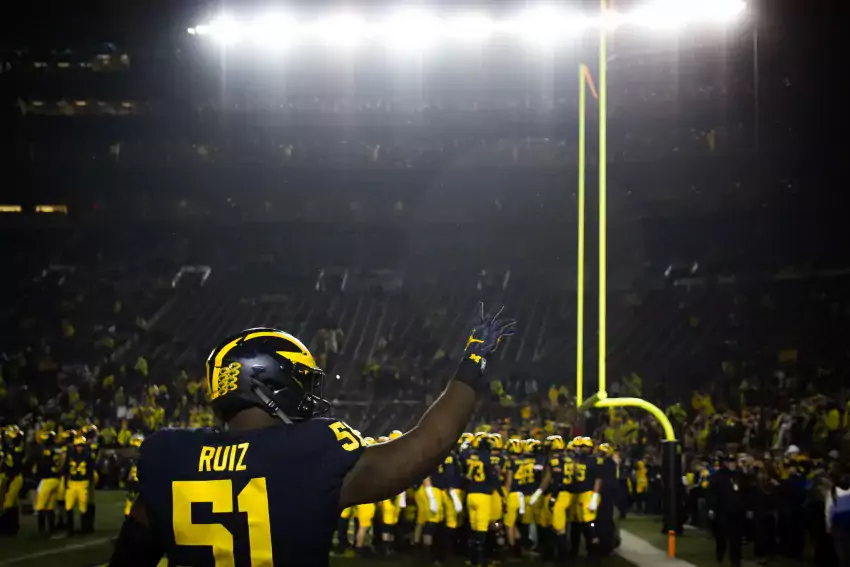
Hello. You have reached the end. This year's season preview checks in at 53,598 words and approximately three hours of podcast. There are a lot of quotes; thanks to everyone who wrote some of them.
STUFF I STEPPED ON
Preview: Middle Tennessee State. The plan is to replace the GO … BLUE cheer with GIDDY … POTTS, okay?
Opponent Watch, Part I. Rutgers is going to a b—nevermind.
Opponent Watch, Part II. Frames, post Moorhead.
THE STORY
Unsigned Hype. They come and they go.
OFFENSE
Quarterback.Patterson's wheelhouse, and an ostrich.
Running Back. Charbonnet will break the curse.
Wide Receiver. Three number ones.
Tight End, No Friends. Aw can we give them one murderfriend named Mason?
Tackles. Big analogy energy.
Interior OL. Goodbye, sweet Ghostbusters photoshop.
5Q5A: Offense. Innovative again.
DEFENSE
Defensive End. Now with Scottish twitter!
Defensive Tackle. What's a what's a Dwumfour for.
Linebacker. How can we point all of these guys at the QB simultaneously?
Cornerback. The last picture of Lavert Hill.
Safety. Hawkins, the hinge.
5Q5A: Defense. Fighting the last war.
MISCELLANEOUS
Special Teams. Bombs away.
Podcast 11.0A. Podcast 11.0B. Podcast 11.0C. wsgs Ace and Seth.
Heuristics and Stupid Prediction. 11-1.
ELSEWHERE
“Nothing in the educational regime of our higher institutions perplexes the European visitor so much as the role that organized athletics play. On a crisp November afternoon he finds many thousands of men and women, gathered in a great amphitheater, wildly cheering a group of athletes who are described to him as playing a game of football, but who seem to the visitor to be engaged in a battle. He is the more mystified when he discovers that of the thousands of onlookers, not one in a hundred understands the game or can follow the strategy of the two teams. At the end, the vast majority of the onlookers only know, like old Kaspar of Blenheim, that “ ‘twas a famous victory” for one university or the other.
When the visitor from the European university has pondered the matter, he comes to his American university colleagues with two questions:
”What relation has this astonishing athletic display to the work of an intellectual agency like a university?”
”How do students, devoted to study, find either the time or the money to stage so costly a performance?”
That was part of the preface of a 1929 Carnegie Foundation report on the growing influence of college football in higher education. How much more bizarre must it look now? This arrangement makes no damn intellectual sense whatsoever on really any level. In virtually every other country, an athlete’s pursuit of a professional sports career takes them to actual professional organizations by the time they’re in their teens; the universities in those countries are for the rest of us who can’t run fast or kick/shoot/hit the balls well to get serious about preparing to become productive adults; trade schools provide another avenue to a career.
Bring Your Champions, They're Our Meat:
College football’s innovators have come up with several key methods to examine whether a team is better than another one such as having them play games against each other. This method, though, remains fraught with uncertainty. The vagaries of a single game resolve little. After all, football analytics specialists tell us that games decided by seven points or fewer are basically random tossups. And even more decisive victories can be explained away by other issues—in 2015, for example, Stanford lost to Northwestern in the opening game and spent the rest of the season claiming that it should not count because the effect of flying to Evanston for an 11:00AM kickoff had so disrupted their Body Clocks that only an uncaring philistine ignorant in the basics of human physiology would expect them to have been able to win. Other hazards of games include poorly-timed injuries and athletics scandals, and, most importantly, uncalled holding penalties, a particular malady that aggrieves internet message board commenters.
------------------------------
This is the first season where one of my kids has a reasonable chance of understanding what's going on. Remember it? Probably not. Correctly identify the sport being played? 50/50. Understand that dad's got some sort of weird emotional disease that erupts weekly for a third of the year? Certainly.
I take comfort in the fact that he knows nothing about Michigan's season-ending futility over these many years, and that there are hundred of stories yet to be written in his immediate future. Some of them are going to be glorious. Maybe this year. Maybe not.
[Bryan Fuller]
Go Blue.
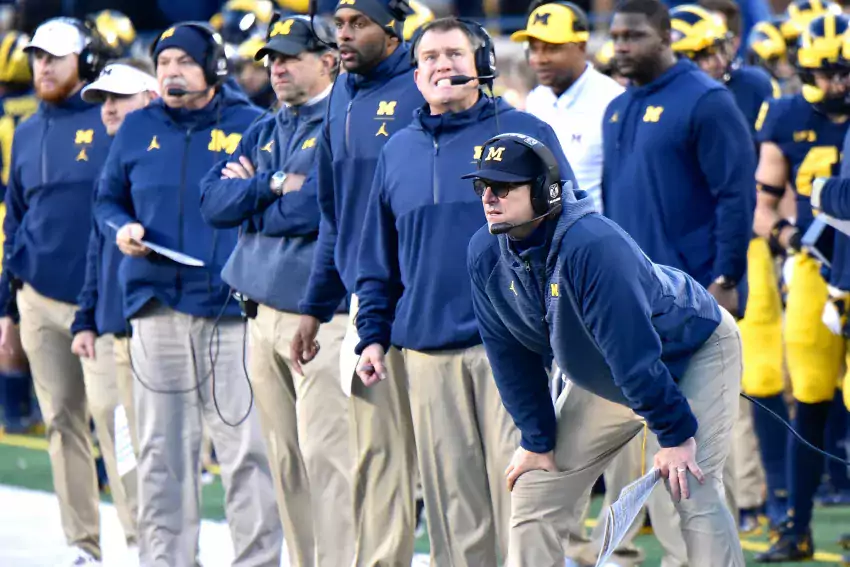
Previously: Podcast 11.0A, Podcast 11.0B, Podcast 11.0C. The Story. Quarterback. Running Back. Wide Receiver. Tight End. Offensive Tackle. Interior OL. Defensive End. Defensive Tackle. Linebacker. Cornerback. Safety. Special Teams. 5Q5A Offense. 5Q5A Defense.
Heuristicland
Turnover Margin
The theory of turnover margin: it is pretty random. Teams that find themselves at one end or the other at the end of the year are likely to rebound towards the average. So teams towards the top will tend to be overrated and vice versa. Nonrandom factors to evaluate: quarterback experience, quarterback pressure applied and received, and odd running backs like Mike Hart who just don't fumble.
| Year | Margin | Int + | Fumb + | Sacks + | Int - | Fumb - | Sacks - |
|---|---|---|---|---|---|---|---|
| 2007 | 0.15 (41st) | 14 | 15 | 2.46(33rd) | 14 | 13 | 2.17 (67th) |
| 2008 | -.83 (104th) | 9 | 11 | 2.42(33rd) | 12 | 18 | 1.83 (57th) |
| 2009 | -1.00 (115th) | 11 | 5 | 1.83(68th) | 15 | 13 | 2.33 (83rd) |
| 2010 | -0.77(109th) | 12 | 7 | 1.38(98th) | 15 | 14 | 0.85(10th) |
| 2011 | +0.54 (25th) | 9 | 20 | 2.31 (29th) | 16 | 6 | 1.38 (33rd) |
| 2012 | -0.69 (99th) | 7 | 11 | 1.69 (69th) | 19 | 8 | 1.38 (28th) |
| 2013 | +0.38(33rd) | 17 | 9 | 1.9 (64th) | 13 | 8 | 2.77 (109th) |
| 2014 | -1.33 (124th) | 5 | 5 | 2.4 (49th) | 18 | 8 | 2.2 (63rd) |
| 2015 | -0.31 (92nd) | 10 | 2 | 2.5 (32nd) | 10 | 6 | 1.4 (28th) |
| 2016 | +0.54 (24th) | 13 | 6 | 3.54(5th) | 7 | 5 | 1.69 (39th) |
| 2017 | -0.31 (90th) | 10 | 7 | 3.23(8th) | 10 | 11 | 2.77 (111th) |
| 2018 | +0.38 (35th) | 11 | 6 | 10.5% (3rd) | 9 | 3 | 5.4% (43rd) |
Let's move to sack rates instead of raw numbers; probably should have done this years ago. Michigan landed a little above average in turnover margin, which is about what you'd expect since they got after the QB more than their quarterback was gotten after.
Not a lot to say as a result. Michigan wasn't an outlier and shouldn't expect to be better or worse this year than you might expect. Michigan gets their QB and four OL back, which should help keep Michigan TOs low. If they can keep up the pressure you'd expect them to be modestly positive again at the end of the year. But turnovers are a fickle mistress, as always.
[After the JUMP: position switches are minimal]
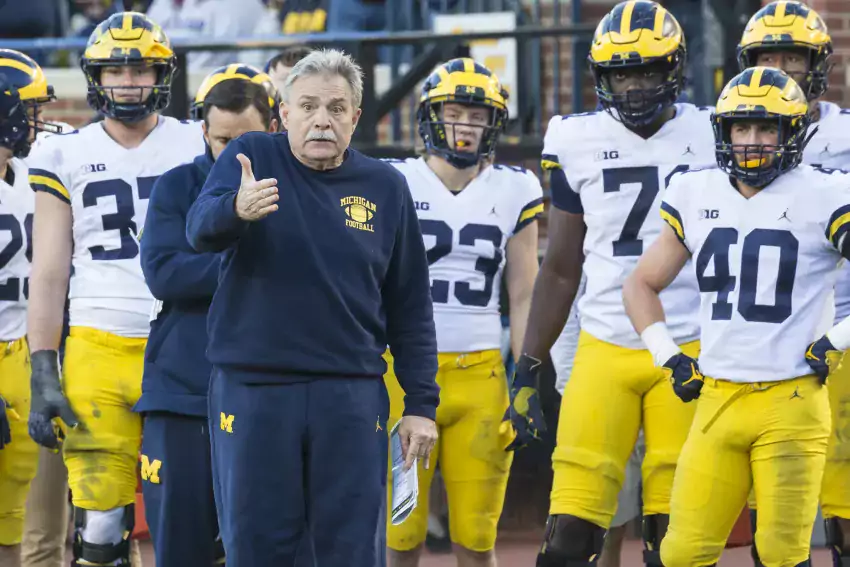
Previously: Podcast 11.0A, Podcast 11.0B, Podcast 11.0C. The Story. Quarterback. Running Back. Wide Receiver. Tight End. Offensive Tackle. Interior OL. Defensive End. Defensive Tackle. Linebacker. Cornerback. Safety. Special Teams. 5Q5A Offense.
1. Are slot fades better or worse than slant vulnerabilities?
[Patrick Barron]
Michigan played slot coverage with outside leverage last year. This meant slants happened:
And after the slants happened Michigan spent a lot of time and energy making them stop happening without eating more slot fades. This necessarily meant taking the linebacker level away from git-em duty and using them as underneath zone defenders:
But mostly it was the coverage. Michigan shut off Wisconsin slants before they even began by playing man with linebackers in short zones. Bush gets a deflection on Wisconsin's first drive to boot the Badgers off the field:
That was Wisconsin's only slant of the game until their final play. That comes at a cost—Bush is not rushing, and he's not able to fire hard against the run—but it was clearly a good tradeoff to make.
That tradeoff did make slants a bad bet. By Northwestern this space was crabbing at folks to "cut that out" about slants since the Wildcats managed 5.6 YPA on them. Even so it was no longer clearly good by the end of the season. Perpetually-annoying Indiana was the tremor before the quake:
…non-Dwumfour DTs were complete non-factors. Four man rushes were set up to single up the DTs and then double-team Michigan's most dangerous rusher, which was Winovich for a while and Gary later. The Winovich cheapshot was an excellent example:
Both Gary and Winovich get outright doubled. Michigan has nothing resembling a complete DT this year so on a play like second and six Indiana can single up the DTs with impunity and Michigan can't play Dwumfour.
The UFR pressure metric was a slim +1, well below Michigan's standard under Brown. Indiana was not particularly good at avoiding sacks last year—41st in sack rate allowed. When the above cheapshot hobbled Winovich against OSU (the #17 pass-pro team last year) Michigan lost its best bet to Carter Coughlin OSU LT Isaiah Prince, and they almost didn't lay a hand on Haskins all game. You know what happened after that.
[After THE JUMP: Uche wally]

predicted: a real good time
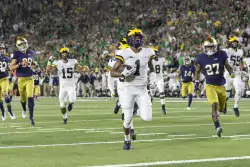
Michigan's been consistent in a thing that's hard to be consistent in

Josh Metellus is good. Dax Hill is fast. Can Hill be fast and good?
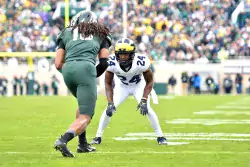
getting a little hairy out there
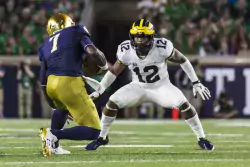
Q: how can you cram all these guys on the field at the same time?
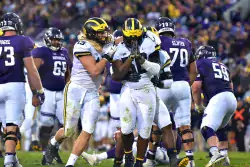
Mike Dwumfour is the fulcrum. Mike Dwumfour is being and nothingness.
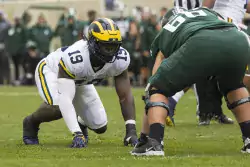
eh, it'll be fine to good
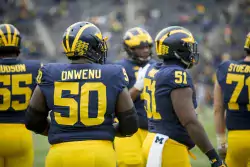
my other brothers E. Honda
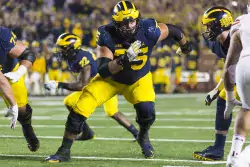
certainly the most optimistic OL preview post since 2011
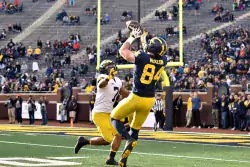
because electricity arcs get it do you get it
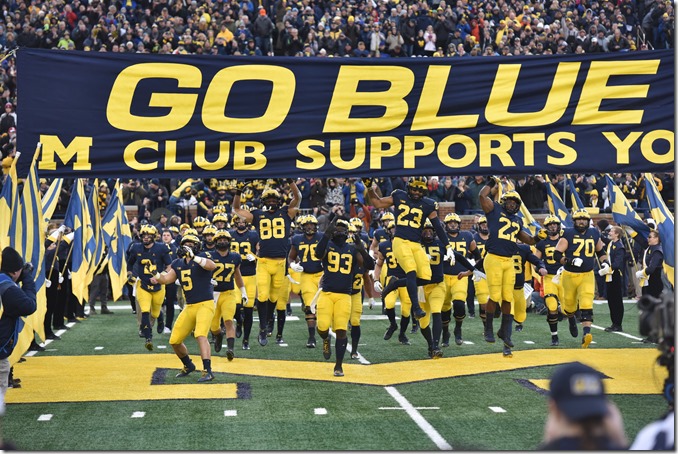
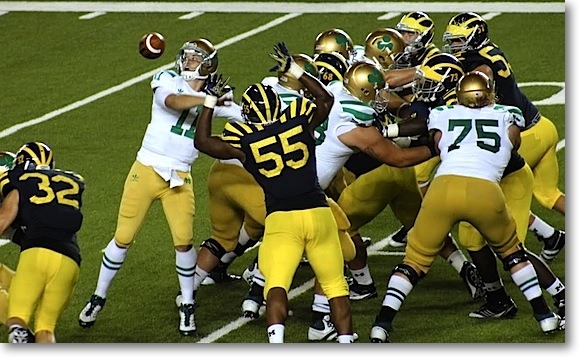
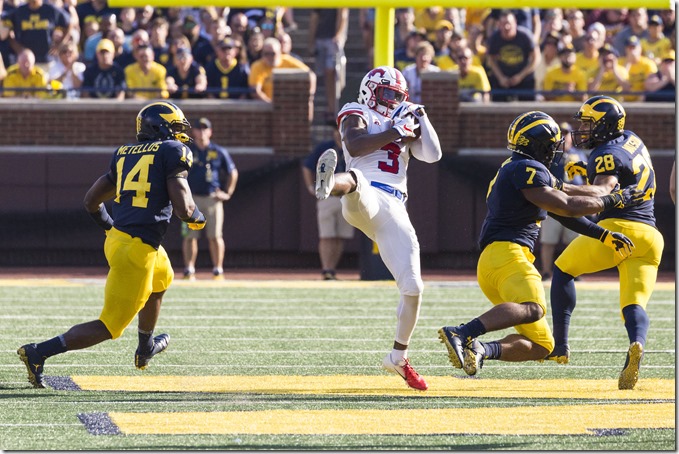
20